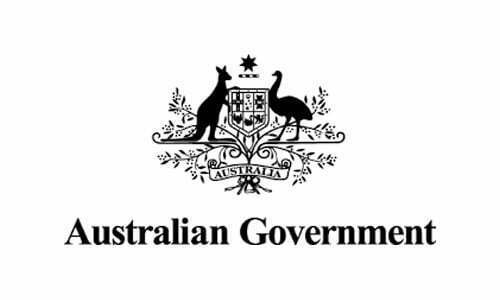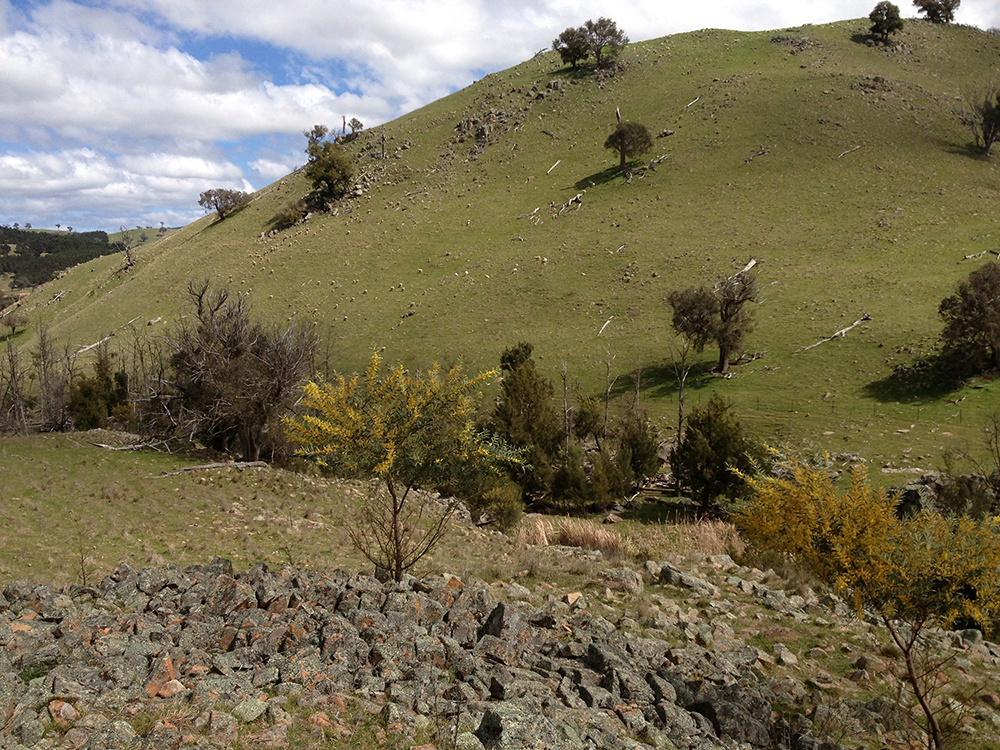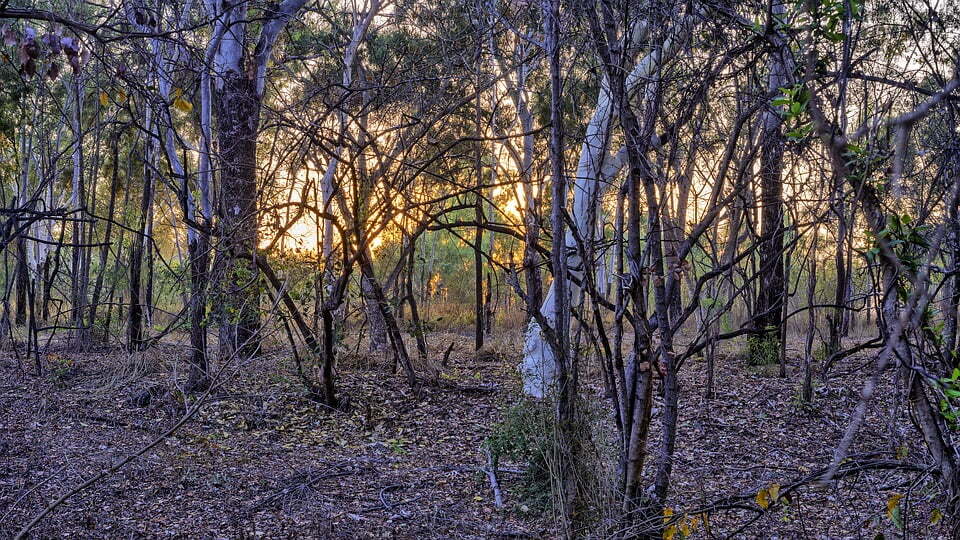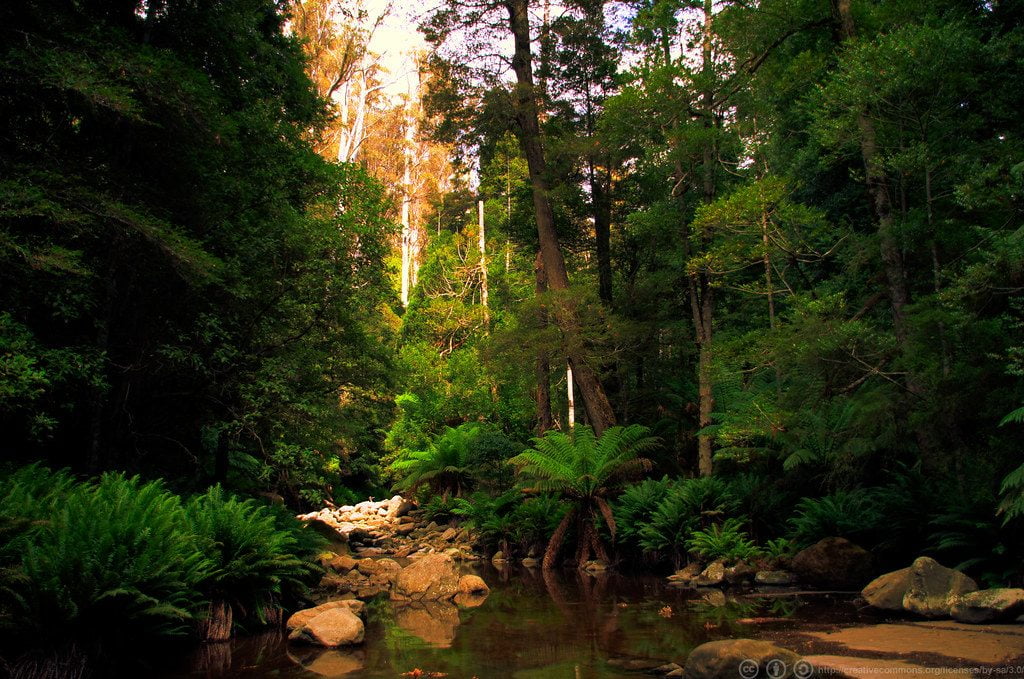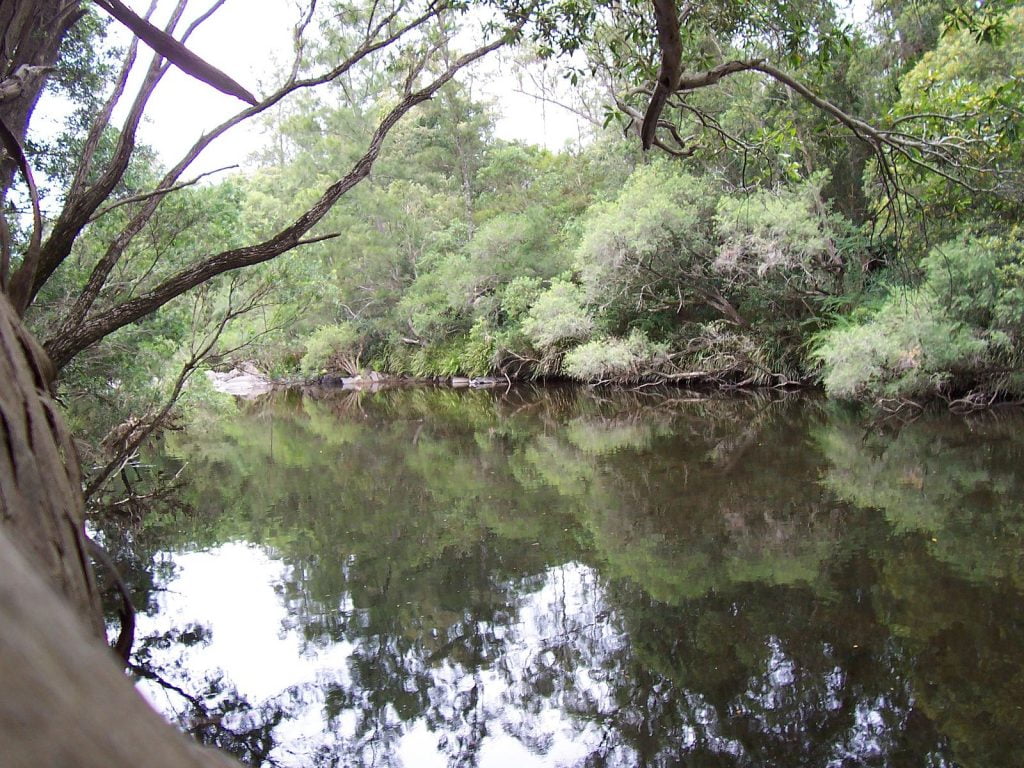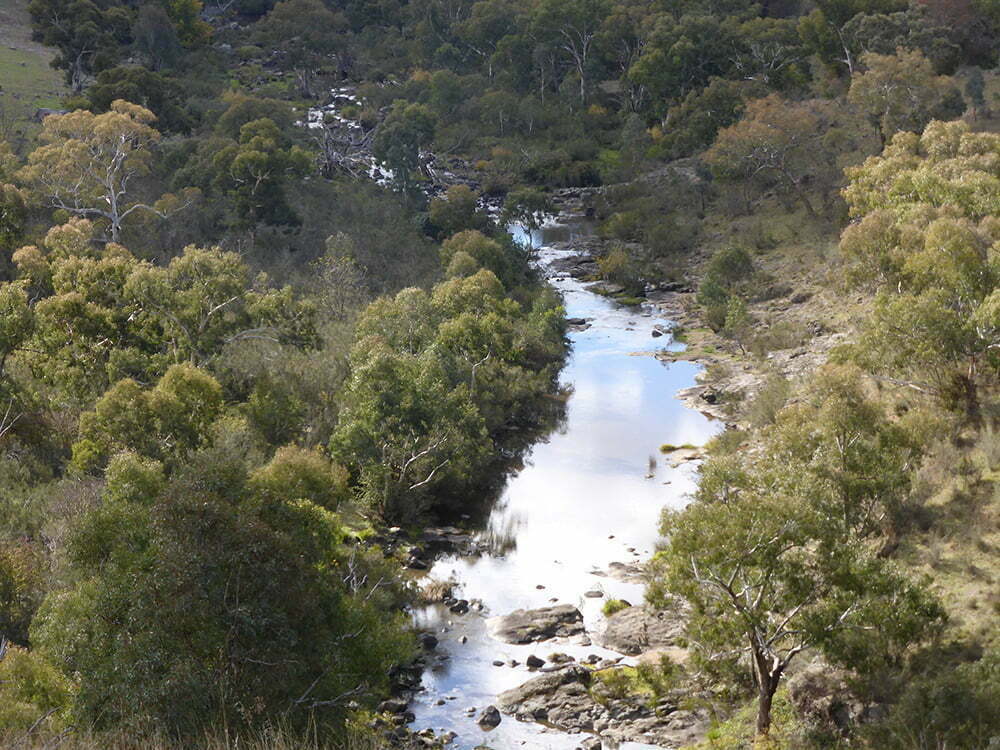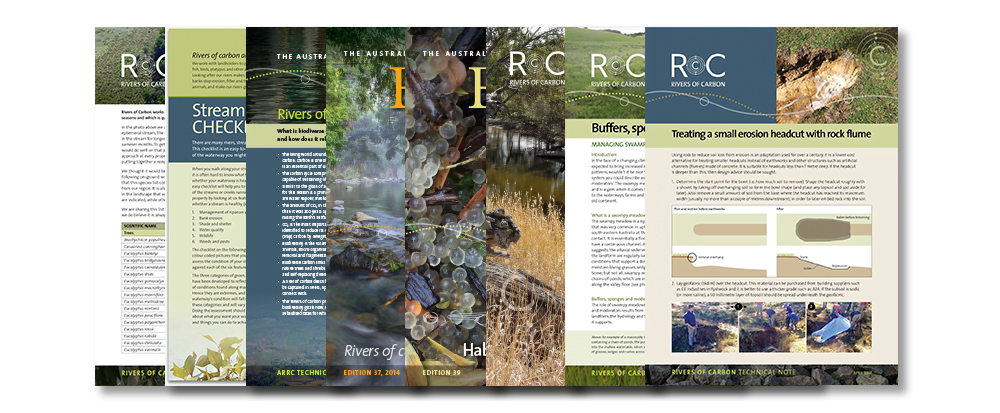Our Southern Riparian Linkages project worked across the Southern Tablelands of New South Wales which has many Aboriginal groups. We recognise the Mulwaree, Wollondilly, Wiradjuri, Gundungurra, Dharrook, Tharawal, Tarlo, Pajong, Parramarragoo, Cookmal, Burra Burra, Lachlan and Ngunawal people. We acknowledge their continuing connection with, and knowledge about land, waters and community. We pay our respects to them and their cultures; and to Elders past, present and emerging.
Adapted from: Welcome to Country & Acknowledgement of Country – Creative Spirits
River Dreaming image (right). Artist: Richie Allen (Ngunnawal/Kamilaroi), Traditional Aboriginal Owners Corporation.
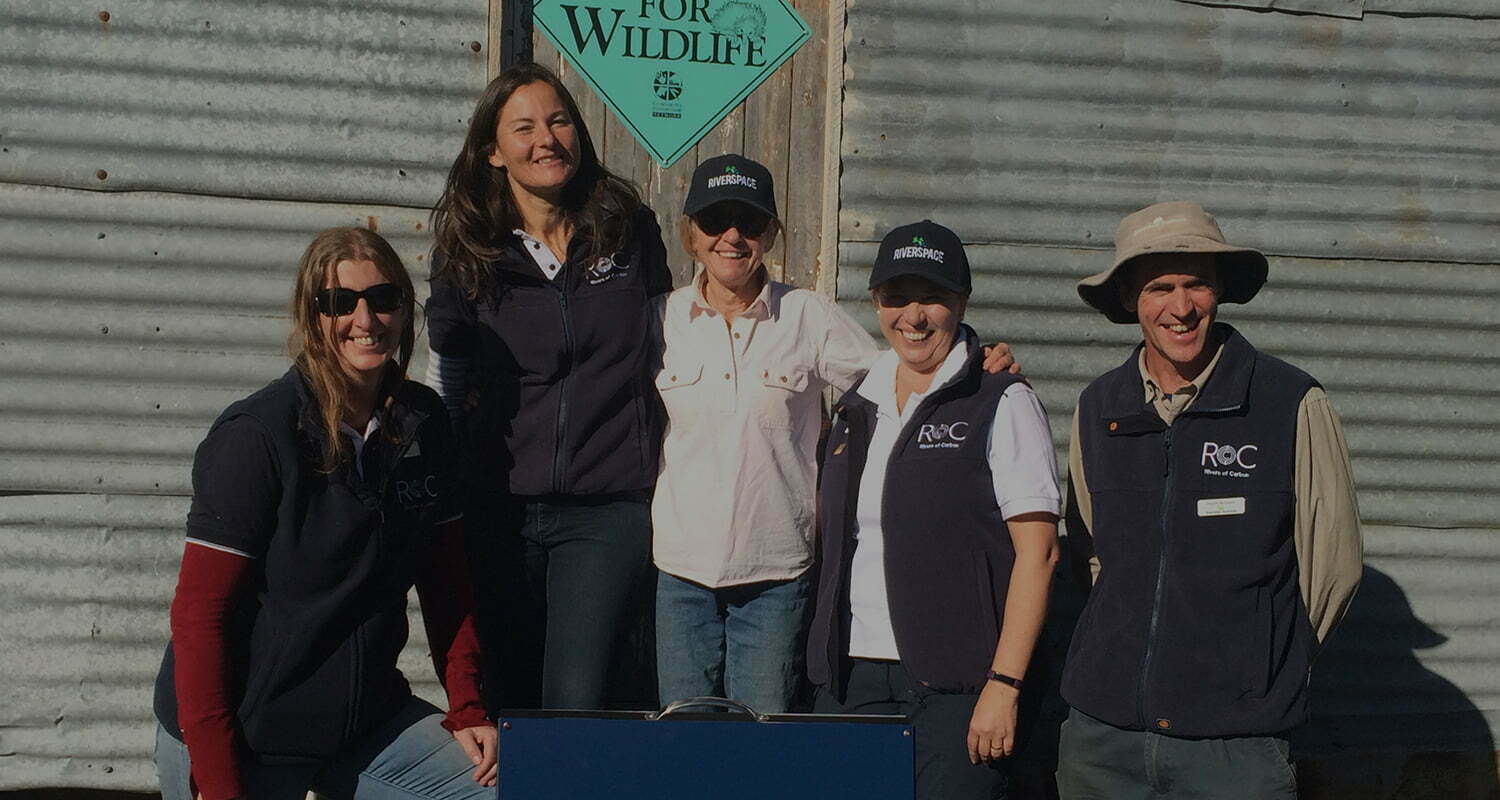
“A river seems a magic thing. A magic, moving, living part of the very earth itself.”
– Laura Gilpin
 Why Southern Riparian Linkages?
Why Southern Riparian Linkages?
Our Commonwealth funded Southern Biodiversity Linkages project was the foundation upon which the Rivers of Carbon initiative has developed. Without this investment Rivers of Carbon would have been an unrealised dream. Beginning in 2012 and ending in 2018, Southern Riparian Linkages enabled us to focus Rivers of Carbon (RoC) on being a Program that empowers people to act in response to climate change by restoring their streams to boost biodiversity, sequester carbon and promote wellbeing. Rather than focusing on one river, we now work with local communities to protect and restore the many streams, creeks and wetlands that connect to larger river systems like the Murrumbidgee and Lachlan. We now have projects across the Southern Tablelands of New South Wales, with more projects in the planning stages, and ongoing requests from communities wanting to get involved. Commonwealth support through the Biodiversity Fund enabled RoC to happen, and we are eternally grateful that we were given this opportunity.
Today, RoC is a collaboration between Federal and State government grant programs both large and small, with all funds matched by cash and in-kind contributions from landholders and local communities. Every RoC project works with a Landcare or equivalent volunteer group to apply for funding and implement outcomes. This means that every investment made is on the basis of a negotiation with a local Landcare group about their priorities, and how RoC can help them to achieve their goals.
Our Biodiversity Fund investment was matched with in-kind and cash contributions from landholders and partner organisations. With these funds we have undertaken riparian restoration on 66 sites on private landholder properties, re-vegetated 887.6 ha of riparian zone, fenced 122 kms of stream, planted 97,000 native species, held 29 events and involved 1652 volunteers. We feel our most important achievement is that we have created a brand that empowers people to feel optimistic about their ability to respond to the uncertainties presented by climate change, and which supports them in taking action.
Our on-ground work:
All of our Rivers of Carbon projects now use the same model we developed Southern Riparian Linkages of focusing on sites with high recovery potential for biodiversity and carbon sequestration, as well as connecting riparian areas so that we have contiguous corridors of vegetation along streams. The co-investment approach we are using provides testimony to the success of the Rivers of Carbon model.
Across our investment portfolio we have a mix of riparian and wetland sites, with a few of these linking to remnant grassy box woodland or shrubby forest. We also have some gully erosion sites that we are stabilising to prevent sediment travelling into the river. For Southern Riparian Linkages we categorised our sites according to three Themes:
- Theme 1: Biodiverse plantings
- Theme 2: Recruitment and regeneration of native vegetation
- Theme 3: Managing invasive species
Prior to work commencing, each site was thoroughly assessed for its recovery potential, its habitat significance, riparian linkages, cost effectiveness in terms of outcomes, and carbon sequestration opportunities. We also ensure that we collaborate with the relevant local Natural Resources Management agency to assess the priority of the site in-line with their Catchment Action Plan.
All of our sites have had a Rapid Appraisal of Riparian Condition Assessment undertaken to provide baseline information against which we can track progress against over the life of the project. We also record other details to complement the Rapid Appraisal of Riparian Condition assessment, for example, stream type, stream class and bank profile. We have a webpage focusing on our monitoring and evaluation approach as we feel it is vital we track before and after riparian rehabilitation works are undertaken.
Once we have planned the works to be undertaken on site with the landowner, we prepare individual species lists for each site based on pre-1750’s vegetation (GIS mapped) and any remnants that are on site. Plants are also chosen with regard to their position in the landscape and moisture availability. Planting tubestock is a key part of the Rivers of Carbon project, as many sites cannot be direct seeded due to high fertility, grass competition and accessibility.
Seed propagation of plants for is ongoing, and is part of Greening Australia’s broader effort to grow 100 000 known provenance plants in association with the seed collection program (undertaken over December/January) for all projects. Riparian community species are part of the species mix, and are being grown specifically for Rivers of Carbon. Seed for growing tubestock is sourced from local provenances and each plant grown can be traced back to the origin of the seed. Tubestock and seedstock are chosen based on the specifics of each site.
In a recent review of past restoration sites we have recorded some recruitment of native vegetation to fenced sites – with regeneration of Eucalypts, and significant regeneration of native grasses in sites that still retained these remnants. In many of our Theme 1 sites (Biodiverse Plantings) however, pasture grasses dominate, and fertility is high. This limits the ability and speed at which native vegetation is recruited. These sites are mostly being planted using tubestock.
Theme 2 (protecting and enhancing native vegetation) sites have a higher level of natural regeneration overall compared with Theme 1 sites as there is vegetation remaining on site. These sites also tend to be native pastures, rather than exotic pastures, and this makes it easier for regeneration to occur. We have found that regeneration of native grasses is significant depending on the level of disturbance, once fenced out bare ground is very quickly colonised. Overstorey and mid storey regeneration is starting to occur at some sites, however, this process can take some time.
Our Theme 3 (managing invasive species) sites are mainly focusing on Crack Willow, as this is the main willow species to be targeted in the Rivers of Carbon project area. Willows are a particular problem in smaller streams where they invade the entire stream causing erosion of banks and stream widening. They also reduce diversity of habitat for macro-invertebrates and use a considerable amount of water. Any willow control being undertaken will be in conjunction with rehabilitation of habitat and associated fencing and revegetation as an imperative. Funding available for willow control is limited. Control will involve stem injection with Glyphosate at some sites, while other sites will require an excavator with specialised attachment (log grab, saw, rake and sprayer). The most appropriate option depend on cost, safety and specific site requirements (in terms of ongoing management). These methods have proved successful in the Rivers of Carbon project area in the past.
We are continuing our work with the Southern Pygmy Perch and the community that is established in the Pudman is still there and breeding. This is brilliant, as the Southern Pygmy Perch is endangered and had been wiped out in many other NSW streams. We have recently installed a rock wall on Blakney Creek to protect the Southern Pygmy Perch from invasion by Redfin and European Carp – you can read more on that story here.
Rivers of Carbon Southern Biodiversity Linkages was the investment we needed to enable us to work with people across the Southern Tablelands to protect and restore riparian vegetation. We are eternally grateful for this investment, as without it, Rivers of Carbon would never have begun.
Project Timeline:
Outcomes achieved so far:
![]()
66 landholders involved
![]()
Working across 66 sites
![]()
122kms of riparian area protected (fencing)
![]()
887.6ha of riparian area rehabilitated
![]()
97,760 plants and 36.7 kilo direct seeding
![]()
158ha of weed control
![]()
30 activities, 2000+ people engaged
Project Updates:
